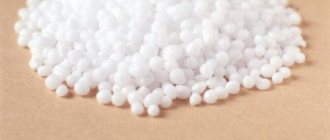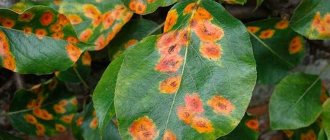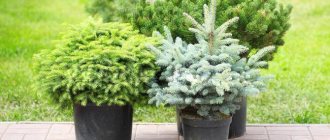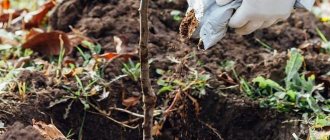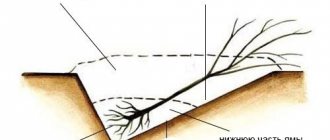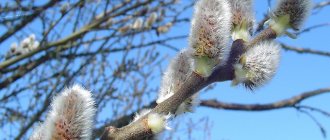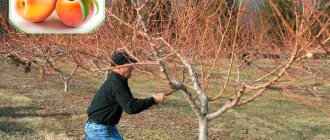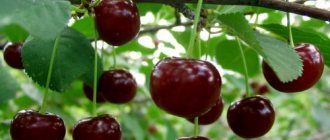Instructions for using copper sulfate in gardening
This article describes in detail the use of copper sulfate for spraying trees and provides instructions for treatment against various diseases.
How did this article come about?
More than a year ago, an article appeared on Usadba about the use of iron sulfate. Its author was extremely dissatisfied with the quality of materials on other sites that recommended the use of ferrous sulfate to control insects, rejuvenate trees and solve other problems that he could not solve. The article became popular: it was linked from social networks, it was commented on (sometimes in a rather funny way), and people thanked for it. Therefore, we decided to continue publishing materials on plant protection products. This article is about copper sulfate (copper sulfate 2).
And again nonsense
As in the case of iron sulfate, many different fables are written about copper sulfate. However, many authors simply confuse them, and also do not see the difference between the use of copper sulfate, Bordeaux mixture and copper oxychloride. Meanwhile, these are different (albeit similar in composition and mechanism of action) drugs.
How to properly prepare a solution for treating trees
To dilute copper sulfate for spraying fruit trees, pour the product into a bucket, add water and mix thoroughly. The amount of vitriol used is affected by the required concentration: to prepare a 3% solution, 300 g of vitriol is dissolved in 10 liters of water.
Copper sulfate is characterized by high chemical activity and can react with H2O molecules to form vitriol (metal sulfate hydrates).
After stirring, strain (to remove debris or undissolved particles).
Copper sulfate (copper sulfate 2) – formula, properties
Copper sulfate or copper sulfate II is a salt that is formed by the reaction of copper or copper oxide with sulfuric acid. The formula of copper sulfate is CuSO4.
In anhydrous form, copper II sulfate has the appearance of small, colorless crystals without taste or odor. True, it is rarely anhydrous and only at low air humidity. This is a very hygroscopic substance: it easily absorbs moisture with the formation of crystalline hydrates. The most common is copper sulfate pentahydrate, in which one molecule of salt is bonded to five molecules of water. Moreover, the bond between water and the copper ion is even slightly stronger than between the copper ion and the sulfuric acid residue.
Pentahydrate has a characteristic bright blue color. This is what is usually called copper sulfate. He's in the photo.
Is copper sulfate harmful to humans?
LD50 (dose at which 50% of animals die) for rats is 30 mg/kg body weight when ingested. The minimum known lethal dose for humans is 11 mg per kg of body weight when inhaled, but this is an exceptional case. In general, taking from 1 to 12 grams of copper sulfate leads to acute poisoning and manifests itself in the form of nausea, vomiting, abdominal pain, metallic taste in the mouth, etc. I repeat: to get such symptoms you need to eat or inhale at least 1 gram of salt, which is absolutely impossible to do by accident. The amount you can inhale when carefully spraying trees with a sulfate solution will not harm a person in any way. Thus, we can consider that copper sulfate is harmful to humans, but very moderately. But it is toxic to fish: this should be taken into account when using it near bodies of water.
How to spray apple trees against diseases in the fall
After the apple tree is prepared for processing in the fall, it is sprayed in dry, cloudy weather. Which drug to use depends on the temperature:
- at +6⁰ C or more, spray the tree with copper sulfate;
- if the temperature drops below +5⁰ C, you need to treat it with iron sulfate.
Spraying is carried out in dry, windless weather.
Heavily infected apple trees need to be treated twice: first with copper and then with iron sulfate. At least two weeks should pass between sprayings.
Apple trees that are cared for annually can be treated with a more gentle preparation - Bordeaux mixture.
Important! When spraying a tree, do not forget about the tree trunk circle. This applies to the treatment of apple trees in the fall from both pests and diseases. All fruit crops must be sprayed at the same time.
The use of copper sulfate in gardening and vegetable growing
Remember, copper sulfate is used in gardening:
- NOT for insect control;
- NOT for tick control;
- NOT for rodent control;
- NOT for plant rejuvenation;
- NOT for increasing yield - it is NOT a growth stimulant.
Copper sulfate is a contact copper-containing fungicide. Fungicide – therefore, to combat fungi. Contact - therefore, it does not penetrate into the plant, acts only in the spot of contact with the plant and, after being washed off with water, ceases to act completely. Copper-containing - therefore, the active ingredient in it is copper.
In addition, vitriol can be used for feeding if there is a copper deficiency. You can read about this at the end of the article.
How does copper sulfate act on mushrooms?
Many proteins have so-called sulfhydryl groups - in them, sulfur is bonded to hydrogen on one side and to a hydrocarbon chain on the other. Among these proteins there are also enzymes - proteins, thanks to which certain metabolic reactions take place in the body. Mushrooms also have such enzymes.
Proteins also have amino groups - approximately the same thing, but instead of a sulfur atom there is a nitrogen atom.
The copper ion from vitriol binds to such sulfhydryl and amine groups, which leads to malfunction and destruction of the protein. If this is an enzyme, then it stops working, and the metabolism in the mushroom hole is disrupted. In addition, copper sulfate is able to accelerate oxidative reactions in the cell, disrupting the overall balanced metabolism.
Article on the topic: Properties of potassium permanganate, use against diseases and as a fertilizer
At a higher level, this means that the spores and conidia of fungi do not have enough strength to germinate and they die. The growth of already formed mycelium also slows down, although this mechanism does not play a significant role. In addition, copper cannot penetrate deep into plant tissues: therefore, the mycelium inside the plant is well protected from copper sulfate.
Diseases
In gardening, copper sulfate is used to protect trees from:
- coccomycosis of cherries, plums and other stone fruits;
- peach leaf curl (caused by the fungus Taphrina deformans). By the way, it’s not just the peach that amazes;
- clusterosporiasis;
- moniliosis;
- anthracnose on gooseberries and currants;
- septoria on them;
- apple scab;
- some pome spots;
- some downy mildews.
Copper sulfate has a weak effect against true powdery mildew, but still slightly slows down the growth of mycelium.
Instructions for using copper sulfate in gardening to protect trees
Copper sulfate is used both independently and for preparing Bordeaux mixture, which we will discuss in a separate article.
Tree treatment in spring
The first spraying with copper sulfate is carried out in the spring, before the buds open. To prepare the working solution, you need to dissolve 100 grams of copper sulfate in 10 liters of water. The working solution should be prepared in glass, plastic or enamel containers. You cannot cook in iron cookware, because more active iron will displace copper from the salt. Not only the tree itself is sprayed, but also the soil around it. Working fluid consumption is 10 liters per 100 m2.
Some authors recommend using a 2.5...3% solution of copper sulfate for spraying, but this is a debatable issue and requires additional study. If we come across convincing data on effectiveness, they will definitely be published in this material.
Tree treatment in autumn
Everything is exactly the same as in spring, but after the leaves fall.
Restrictions
There is an opinion that frequent treatments can lead to the accumulation of copper in the soil, which is harmful, including for plants. Let's try to figure out how fair this is.
The maximum permissible concentration of copper in soil is 3 mg per kg of weight. The density of arable land is about 1.3 g/cm3 = that is, the mass of one cubic meter of soil is about 1300 kg.
The mass fraction of copper in copper sulfate (that is, copper sulfate pentahydrate) is about 25%. Thus, with one treatment, about 25 grams of copper fall into an area of 100 m2.
Let us assume (although this is not true) that all this copper completely enters the soil and settles forever in the upper layer 2 meters thick, where the bulk of plant roots are located. Thus, 25 grams of copper will be distributed over 200 cubic meters of soil. Therefore, for 1 kg of soil you will have:
25 / (200x1300) = 0.000096 grams or 0.096 milligrams. That is, the MPC can be accumulated by the soil after 30 such treatments, if copper does not migrate at all in the soil and is carried out with the green mass of plants, which is impossible.
Processing during the growing season
Spraying with copper sulfate during the growing season is carried out as part of Bordeaux mixture or other fungicides. We plan to publish instructions for using Bordeaux mixture in a separate material. You should not spray vegetating trees with a pure solution of copper sulfate, since it is acidic and can burn the green parts of the plants. Therefore, acidity is neutralized by adding lime.
Using copper sulfate for foliar feeding
Foliar fertilizing is used if it is known for sure that there is an insufficient concentration of copper in the soil (as a rule, these are peat-bog soils and some sandy soils - for example, in the Rostov region), or if there is a pronounced copper deficiency in plants.
Copper deficiency in plants manifests itself primarily on young shoots and leaves in the form of chlorosis, leaf shrinkage and the appearance of necrotic spots. As you can see, the symptoms are quite nonspecific - so it is better to do a soil analysis.
Foliar feeding is carried out at 0.01%. 0.02% solution of copper sulfate - that is, dissolving 1..2 grams of copper sulfate in 10 liters of water. It is better to prepare such a solution in two stages - first dissolve the vitriol in 200..500 ml of warm water, and then stir it with the rest. Plants should be sprayed in calm, warm, preferably cloudy weather.
Safety
Without this, our instructions for using copper sulfate in gardening would be incomplete.
If a solution of copper sulfate gets on your skin, you can simply ignore it, but it is better to protect your eyes and mucous membranes. Spray with copper sulfate wearing a bandage or respirator. If the solution gets into your eyes, rinse them with clean water.
What it is?
Copper sulfate (another name is copper sulfate ) are small crystals of a blue or dark blue hue.
The substance is non-volatile, odorless, has an astringent bitter taste and a slightly noticeable metallic taste. Found in nature in minerals. On an industrial scale, vitriol is produced by the action of sulfur on the main component.
The chemical compound dissolves easily in water, especially hot water. When copper sulfate enters water, heat is generated. In the open air, the substance erodes and loses its properties, becoming a white or white-gray powder.
The product is dangerous for fish; at high concentrations it is also toxic to warm-blooded species.
Operating principle
Copper sulfate has a double effect on the plant. Let's talk about each in more detail.
Therapeutic agent in the composition of fertilizers and medicinal solutions for plant crops:
- copper is part of enzymes that are responsible for redox processes occurring in plant tissues;
- takes part in the metabolism of carbohydrates and nitrogen (these substances increase resistance to the harmful effects of fungal diseases);
- regular intake of copper into plants helps to increase the sugar level in roots and fruits, and also increases the protein and fat content in oilseed plants and increases the amount of starch in potatoes;
- the substance increases productivity.
Chemical drug with contact-destructive effect :
- copper ions ways to destroy the spore shell and the mycelium itself;
- upon coming into contact with enzymes of a pathogenic cell, they then cause irreversible negative processes in the structure of the cell and cause the death of fungi, rot, and other pathogenic organisms;
- effective against rodents and suckers.
Copper sulfate, unlike iron sulfate, is too toxic for use on an industrial scale, so it is more advisable to use it in small garden plots.
Use of copper sulfate
This fungicide is used in the garden, as well as at home, to protect plants from a number of diseases:
- Alternaria
- ascochyta blight
- moniliosis
- scab
- grape mildew
- spotting
- white spot (septoria)
- downy mildew
- rust
- late blight, etc.
In addition, when spraying against diseases, copper sulfate is a simultaneous foliar feeding. Copper deficiency usually occurs in plants growing on acidic sandy and peaty soils.
Other uses of copper sulfate:
- as an antiseptic against mold and rot on wooden structures
- for soil disinfection
Article on the topic: Fungicide Maxim: instructions for use, reviews of the drug, storage
If this fungicide was actively used in the spring-summer period, then it is better not to use it before winter so as not to oversaturate the soil with copper ions.
Preparing apple trees for processing in the fall
To combat pests and diseases, before processing, apple trees are pruned in the fall, dead bark is cleaned with a metal brush, and rotten spots are picked off. All fallen leaves and other plant debris are raked and removed from the area.
It is often recommended to burn them. But the smoke released when leaves burn is a strong carcinogen. Almost all countries of the former Soviet Union have passed laws prohibiting burning leaves, although few people pay attention to this. But in the fall of 2021 in Ukraine, some owners of private houses have already paid very significant fines.
What to do with the source of infection? The solution is compost heaps, where fallen leaves and plant debris are removed. There they can be treated with special preparations that turn waste into invaluable fertilizer for the garden. You just need to choose a chemical that completely destroys pests and diseases.
In autumn, when temperatures are low, the compost heap can be treated with a saturated urea solution. Urea will burn out pest larvae and pathogens, and saturate the plant mixture with nitrogen. The pile needs to be stirred up with a pitchfork and processed several times. In spring, the compost is shed with other preparations, for example, phytosporin. In a year it will be ready to use.
Consumption rates
As a rule, a 1% solution is used with a consumption rate of about 10 liters per 100 m2. To prepare the working fluid, dissolve 100 g of copper sulfate in 10 liters of water or 10 g per 1 liter of water.
General rules for diluting copper sulfate:
- Apple, pear, quince: for scab, phyllosticosis and other spots, moniliosis, drying out 100 g of the drug per 10 liters of water, first spraying in early spring before buds open, at a consumption of 2-5 liters per tree. Can be repeated 2 weeks before harvesting apples and pears.
- Apricot, peach, plum, sweet cherry, sour cherry: against clasterosporosis, coccomycosis and other spots, moniliosis, leaf curl, dilute 50-75 g per 10 liters of water, first spraying in early spring before buds open, at a consumption of 2-3 liters per tree .
- Gooseberries, currants: for anthracnose, septoria and other spots, dilute 50-75 g per 10 liters of water, first spraying in early spring before buds open, with a consumption of 1.5 liters for an average-sized bush.
- Spraying potato tubers against late blight before planting: 2 g of the drug per 10 liters of water. It is more convenient to put the planting material in a vegetable net and dip it in the prepared solution.
- Indoor flowers - watering against a complex of diseases - dilute a teaspoon (without a slide) in 2 liters of water to get a sky-blue solution, water at the root or spray on the leaves.
For spots on vegetables, for example with ascochyta blight on cucumbers, plants can be sprayed with a 0.5% solution of copper sulfate and urea: 5 g of vitriol and 10 g of urea per 10 liters of water, repeat twice at weekly intervals.
To disinfect open ground soil and greenhouses from diseases a week before planting seedlings or sowing seeds, water the soil with a 3% solution of copper sulfate (30 grams per liter of water). Such treatment will also protect potatoes from late blight.
To treat the root system before planting, dilute 100 g of the drug in 10 liters of water, soak the root system (bulbs or tubers) for 3 minutes. Then remove from the solution and rinse thoroughly in running water. Bulbs or fleshy tuberous roots, then air dry before planting.
How to dilute copper sulfate
Dilute the required volume of powder, for example, 100 g of copper sulfate, in a small amount of water (500-700 ml), poured into a plastic bucket and heated to a temperature of 40-50 degrees (dissolution is better), add water while stirring to increase the volume of the working solution up to 10 l. Do not use metal utensils! Before pouring the prepared solution into the sprayer, strain through a filter, for example, through nylon tights.
Treatment of tomatoes with copper sulfate against late blight
Tomatoes are plants sensitive to errors in treatment with copper-containing preparations. In order not to burn the leaves, but to defeat late blight, a very weak concentration is enough, only 0.2% solution. Prepare a copper-soap emulsion: grate 200 g of laundry soap and dilute it in a small amount of hot water; separately in a glass jar, dilute 20 g of copper sulfate, use a wooden stick to stir, pour the fungicide into the soap solution in a thin stream, stirring constantly and bring the solution to 10 liters of water.
You need to spray the tomatoes with this solution over the leaves, the scheme is as follows:
- spray the seedlings for the first time, a week after planting in a greenhouse or open ground
- further, depending on the weather, if the summer is dry and there is little rain, then do not spray until the August cold snap, make do with preventive treatments with phytosporin, if the summer is damp and cool, treat every 10-12 days.
Spray in calm weather, trying to wet the back of the leaves.
When can you eat fruits and vegetables after spraying with copper sulfate?
Most vegetables can be eaten 14-15 days after spraying, with the exception of:
- melons (cucumbers, zucchini, pumpkins, watermelons, melons) - they can be sprayed 5 days before harvesting
- tomatoes can be sprayed against late blight and other diseases 7-8 days before harvesting tomatoes
Important: rinse all fruits thoroughly with running water several times - copper is not absorbed by the plant and does not penetrate into the fruit, it remains on top of the fruit shell and is dangerous only if the fruits have a soft skin, such as peaches, or the fruits are cracked.
Fruits and berries that cannot be washed well before eating - raspberries, strawberries, apricots, peaches, grapes, some varieties of currants (with soft berries) - can be sprayed with copper preparations at least 1.5 months before the harvest ripens: one treatment before flowering, and the second by ovary.
Copper sulfate for root rot, blackleg, fusarium
To save cucumbers, zucchini or pumpkins from root rot (symptoms: wilting of bushes in hot weather, yellowing of leaves, dying off of ovaries, stopping the growth of greens), you can prepare the following solution: 1 teaspoon of copper sulfate, 1 teaspoon of zinc sulfate, 1 tbsp. . a spoonful of simple superphosphate per 10 liters of water. Water the cucumber bushes with a freshly prepared solution at the rate of 5 liters of liquid per 1 square meter. m of land.
Watering against blackleg and fusarium of vegetables and flowers: dilute 5 g of the drug per 10 liters of water.
How to treat wooden structures with copper sulfate
Copper sulfate is an excellent antiseptic; it can be used to treat any wooden structures in a summer cottage - the walls of greenhouses and hotbeds, walls and structures of cellars, sheds, gazebos, wooden flooring, fences. It is better to apply the solution by spraying, on small surfaces with a brush or sponge (work with gloves). Let dry and repeat the treatment two more times. The coating must be renewed after 3-4 months.
Related article: Previkur: instructions for use, reviews of the fungicide, storage
In some cases, for longer protection time, you can add clay to the solution to create a creamy mass; use it to coat the supporting posts of a fence, the porch of a country house, or support beams in greenhouses.
You need to know that deeply ingrained mold cannot be removed or destroyed with copper sulfate; it is better not to use such material, since the boards lose their strength, and mold from them can spread to neighboring ones; in such cases, it is worth using preservative, non-washable antiseptics.
Copper sulfate as fertilizer
Copper sulfate is applied only on soils poor in this element, for example, chernozems contain copper in sufficient quantities, a little less, but not fundamentally, in sod-podzolic and gray forest soils, but peat-bog and in some places sandy and sandy loam soils contain little copper, therefore Once every 5-6 years, in early spring or autumn, you can add copper sulfate: consumption 1 g per 1 sq.m.
For foliar feeding of vegetative plants with signs of copper deficiency (manifested primarily on young leaves), the dosage is 1-2 g of copper sulfate per 10 liters of water.
Types of solutions
There are 3 main types of copper sulfate solutions used in gardening:
- A solution in a concentration of 0.2 - 0.3% (20-30 grams per 10 liters of water) of copper sulfate (preventive and feeding type). This solution is used to fertilize and fertilize the soil, as well as to prevent certain bacterial and fungal infections. Also, it makes sense to use it to restore the balance of copper in the plant’s body (copper deficiency is very often observed with chlorosis, curling of leaves and shoots, as well as with tillering without the formation of shoots).
- A solution in a concentration of 0.5 - 1% (50-100 grams per 10 liters of water) of copper sulfate (therapeutic and preventive type). This solution is usually used for the treatment and prevention of fungal infections (anthracnose, clasterosporiosis, coccomycosis, pathological spots, septoria, phyllostictosis, scab, various rots, curls), as well as to combat insect pests. Also, it can be used to treat damaged branches and shoots of plants to speed up the healing of wounds. This concentration of vitriol does not burn the plants.
- A solution in a concentration of 3 - 5% (300-500 grams per 10 liters of water) of copper sulfate ("burning out" type). It is very toxic for most plants, so this solution should be used only in exceptional cases - to disinfect the ground, to burn out mold, and so on. After cultivating the land with them, you need to exclude this land from agricultural activities for a year.
Toxicity
Copper sulfate has a hazard class 3 for humans (can cause serious irritation of the mucous membrane upon contact with the drug or solution) and a hazard class 3 for bees (border protection zone for bees is 4-5 km). The drug has low toxicity for bees, however, it is better to isolate the bees during the period of crop treatment and for the next 5-20 hours. Not phytotoxic if dosage is not exceeded.
Security measures
Perform processing using gloves and goggles; avoid smoking, drinking, and eating while working. In case of contact with skin or mucous membranes, rinse with plenty of water; if it enters the digestive tract, vomiting usually occurs immediately, do not take any medications, call an ambulance immediately.
General characteristics of copper sulfate
In a chemical sense, copper sulfate is a salt of sulfuric acid - sulfate. In agriculture, it is used as a fungicide, antiseptic and copper-sulfur fertilizer.
Externally, copper sulfate is difficult to confuse with something else. It appears as a bright blue powder and dissolves easily to form an equally blue aqueous solution. Copper sulfate is valued by plant growers for the following advantages:
- availability and low price;
- variability of application;
- work with a wide range of pathogens;
- when used correctly, microorganisms are not addictive;
- low level of danger for humans and bees.
It also has disadvantages. If the rules of use are not followed, copper sulfate can exhibit phytotoxicity, which manifests itself in the form of premature leaf fall in tree crops and the appearance of a dry “net” on the fruits.
Another serious drawback is the high acidity of the substance. When copper sulfate enters the soil, it causes a significant shift in pH to the acidic side. Therefore, copper sulfate is most often used in combination with lime, which neutralizes acidity. However, this option is not without its drawbacks. Excess copper in the soil leads to the death of beneficial soil bacteria and deterioration in the absorption of iron, leading to chlorosis.
Important! To reduce the harmful effects of copper sulfate on the soil, it is better to apply it by spraying plants, reducing watering to the required minimum. In this case, treatment of plants with copper sulfate should be supplemented with intensive soil treatments with EM preparations.
Why do you need spring gardening?
Throughout the year, trees are attacked by various insect pests and are also susceptible to diseases. Even a high-quality treatment of an orchard with copper sulfate does not give 100% results and some of the pests continue to exist and multiply. The onset of autumn cold is a signal that it is time to look for shelter for the winter, and the best place for this can be considered the bark of trees and shrubs. Also, some types of insects overwinter well in fallen leaves and even in the soil.
With the onset of spring, as soon as the sun begins to warm the surrounding air to +5 degrees, wintering pests wake up and crawl out, continuing to feed on the sap of cultivated plants. Treating an orchard with copper sulfate in the spring allows you to cope with this task and destroy most insects and some diseases at an early stage.
Fungicidal and insecticidal properties of copper sulfate
Most often, copper sulfate is used to combat fungal diseases of plants. Its toxic effect on pathogens develops according to the following scheme:
- copper ions bind to enzyme complexes of fungal cells;
- the cell cytoplasm coagulates and denaturation of proteins occurs;
- The Krebs cycle, which ensures cell respiration, is interrupted.
A similar process occurs when copper sulfate interacts with insect cells. But in this case, the drug acts more selectively, showing high toxicity towards eggs and larvae of pests.
Pathogens sensitive to copper-containing fungicides
Copper sulfate and mixtures based on it cope well with the following plant diseases:
- peronosporosis;
- coccomycosis;
- moniliosis;
- late blight;
- cercospora;
- scab;
- different types of spots;
- rust;
- septoria;
- anthracnose;
- ascochyta;
- powdery mildew.
At the same time, copper sulfate has a poisonous effect on psyllids, aphids, caterpillars and many other insects. A number of publications also mention the effectiveness of copper sulfate against spider mites.
Copper sulfate is suitable for spraying pome and stone fruit crops, currants, gooseberries, grapes, tomatoes, cucumbers, beets, potatoes, onions, raspberries.
